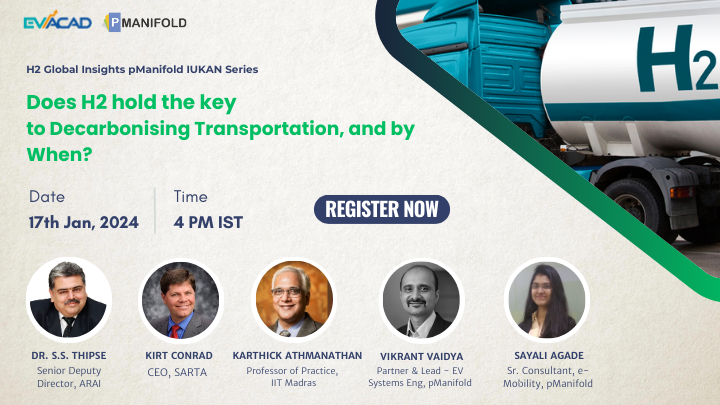Hydrogen is an increasingly important piece of the net zero emissions by 2050 puzzle by meeting (22%) 1 of its energy demand which is reflected in its increasing share in cumulative emission reductions. The world’s H2 demand stands at 90 million metric tons per annum (MTPA), with projections soaring to a staggering 660 MTPA by 2050. The global hydrogen supply will need to increase sixfold, compared to 2020 levels, to meet the forecasted demand for hydrogen.
According to the International Energy Agency (IEA), the projected utilization of H2 by 2050 is primarily centered around key sectors: Transport (40% to 45%) industry applications (15%), power generation (12%), and buildings/refineries (28%). The anticipated Mobility demand projections (freight) for 2050 in the mobility sector indicate that the road sector is expected to contribute 25%, followed by the rail sector at 7%, the aviation sector at 3%, with the remainder attributed to the marine sector.
Strong hydrogen demand growth and the adoption of cleaner technologies enable hydrogen and hydrogen-based fuels to play a significant contribution to decarbonizing sectors such as long-distance transport where roughly one-third of greenhouse gas emissions from road transport stem. Long-distance transport efficiency varies significantly among battery electric vehicles (BEVs), internal combustion engines (ICE), fuel cell vehicles (FCEVs), and Hydrogen internal combustion engine (H2ICE) trucks.
In assessing the ideal option for future long-haul transport trucks, a comprehensive analysis of critical parameters: fuel efficiency, vehicle cost, fuel cost, climate impact, infrastructure investment requirements, technology selection, OEM readiness, and application suitability. This evaluation aims to provide a clear understanding of the most suitable choices for the evolving landscape of long-haul transportation trucks.eg., BEVs showcase exceptional efficiency, boasting a well-to-wheel efficiency of approximately (75%), significantly higher than FCEVs (30%) & ICEVs at (55%). For shorter distances, this weight disparity diminishes, making BEVs more feasible, especially for lighter cargo. On the other hand, FCEVs exhibit impressive range capabilities, reaching up to 1,000 km with liquid hydrogen storage or 800 km with 700 bar storage, catering effectively to long-haul transportation needs.
According to the Global Hydrogen Council and FMI, the market for H2 Trucks US$ 3.84 Billion (2023) was estimated to be about US$119.18 Billion4 with a CAGR of 41% for (2033). Hence it is crucial to determine the best option for future long-haul transport trucks amid this rapidly expanding market.
Key takeaways-
- Hydrogen application in the transport sector is dynamic and is influenced by evolving technologies and contextual factors. It is not one solution that will fit all requirements; rather, it’s a mixed bag of solutions.
- It is advisable to consider the immediate availability of blue and grey hydrogen rather than postponing and aspiring solely for the use of green hydrogen at the present moment.
- Affordability is crucial for market acceptance, and cost considerations play a significant role in the adoption of hydrogen solutions.
- In the adoption of any technology, safety often takes a backseat, with economics taking precedence. In the context of hydrogen (H2) applications in transportation, ensuring safety is most important. This is particularly considering hydrogen’s flammability, propensity for leakage, and its potential to cause embrittlement in steel.
- No one-size-fits-all solution exists for these problems. It’s important to take a practical approach, exploring different options, including hybrid approaches like blended fuels (e.g., CNG + H2), strategically planned for viability and market acceptance.
- In incorporating H2 into transportation, it becomes important to foster effective collaboration between vehicle manufacturers and fuel suppliers. This partnership will help tackle technical challenges and streamline the adoption of hydrogen.


